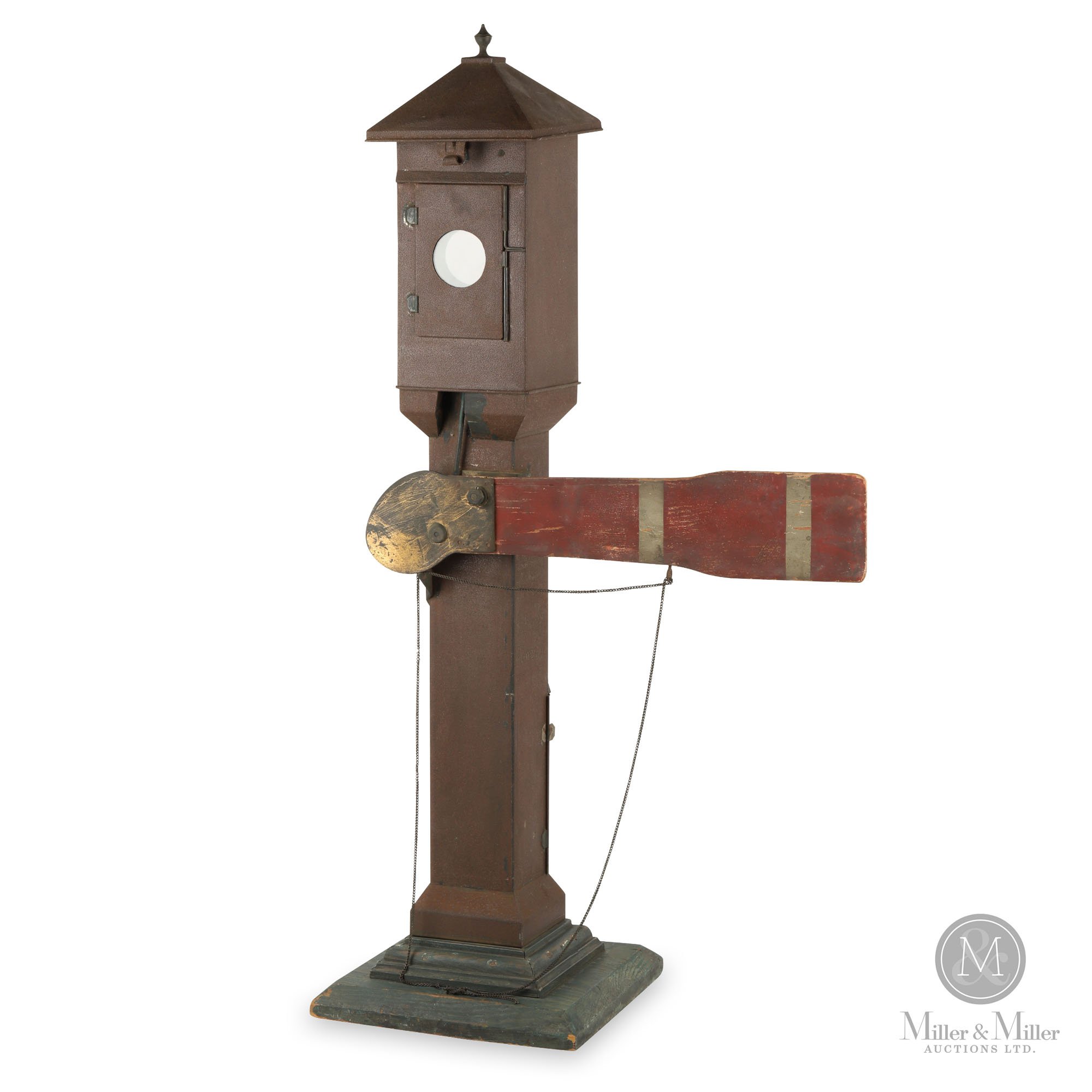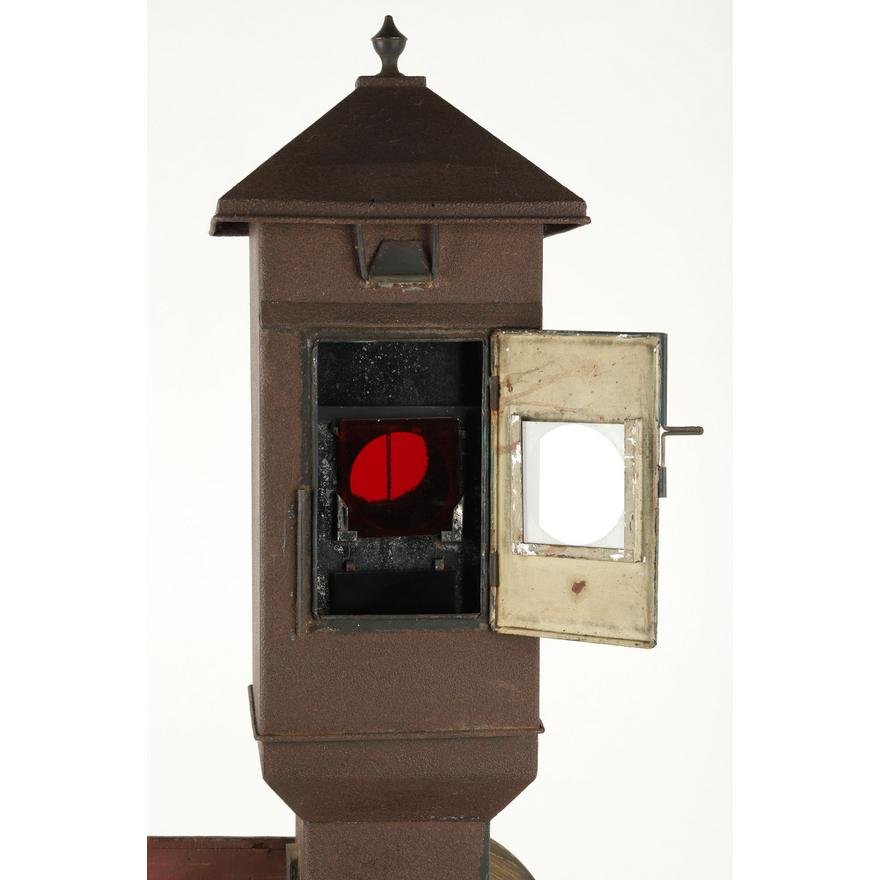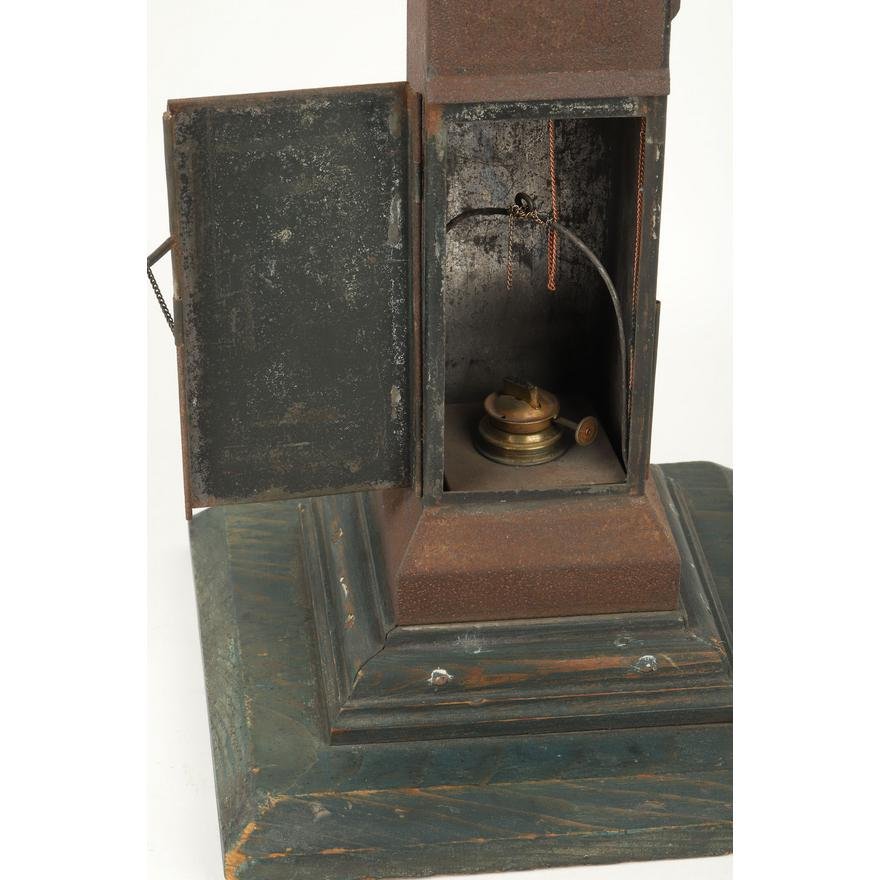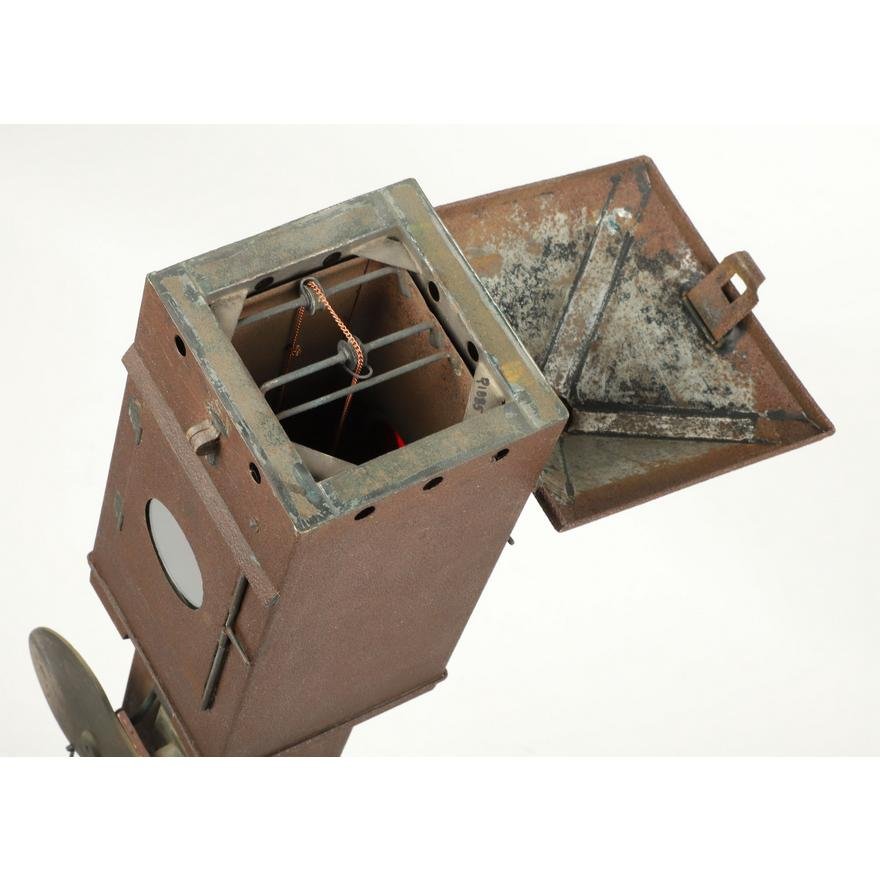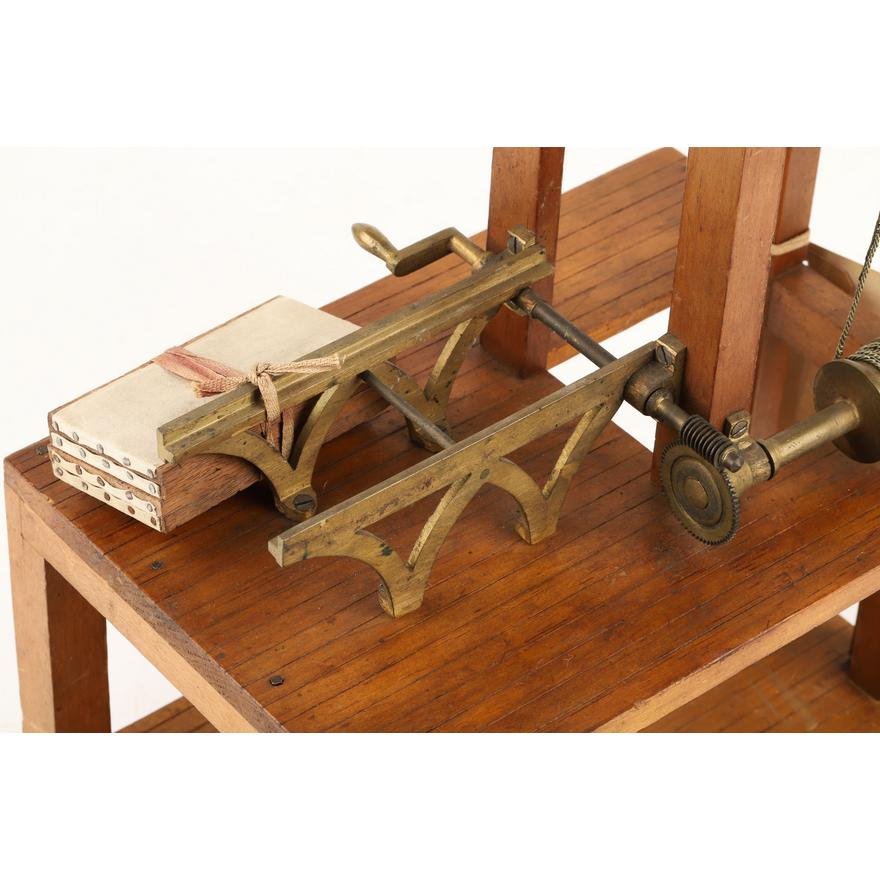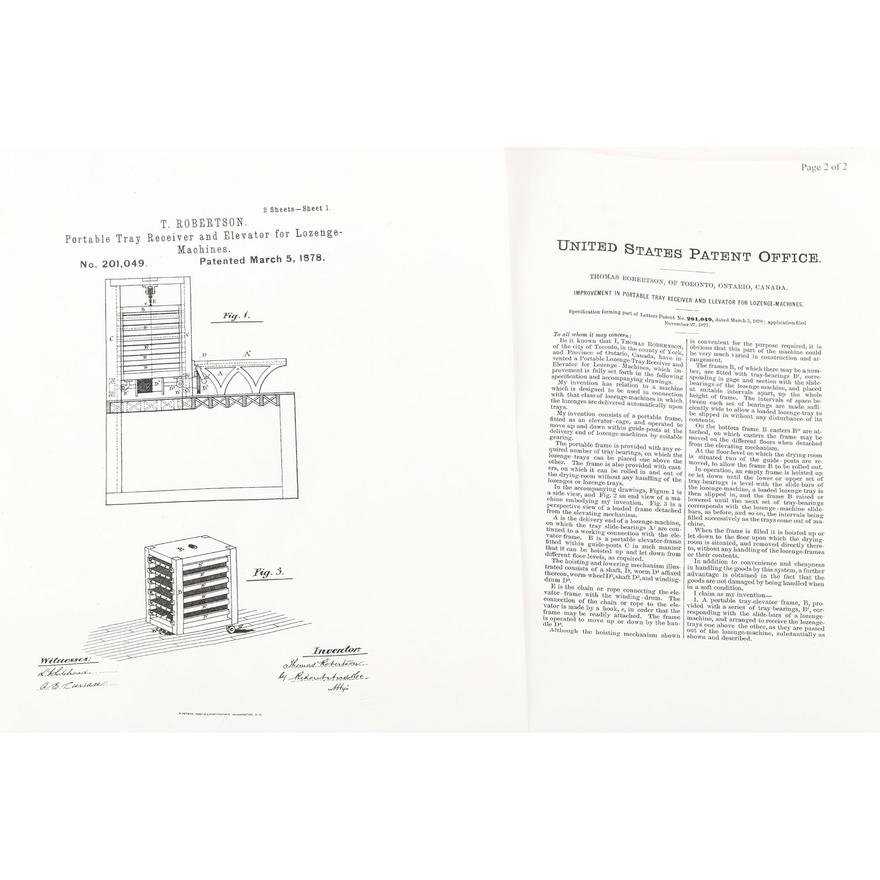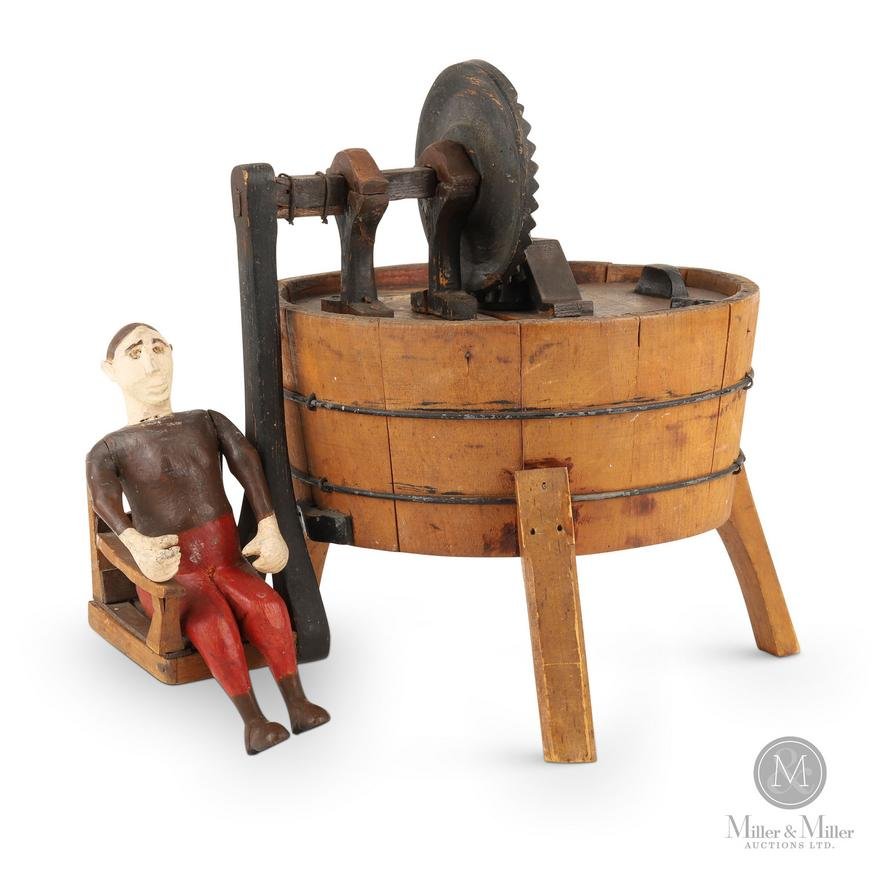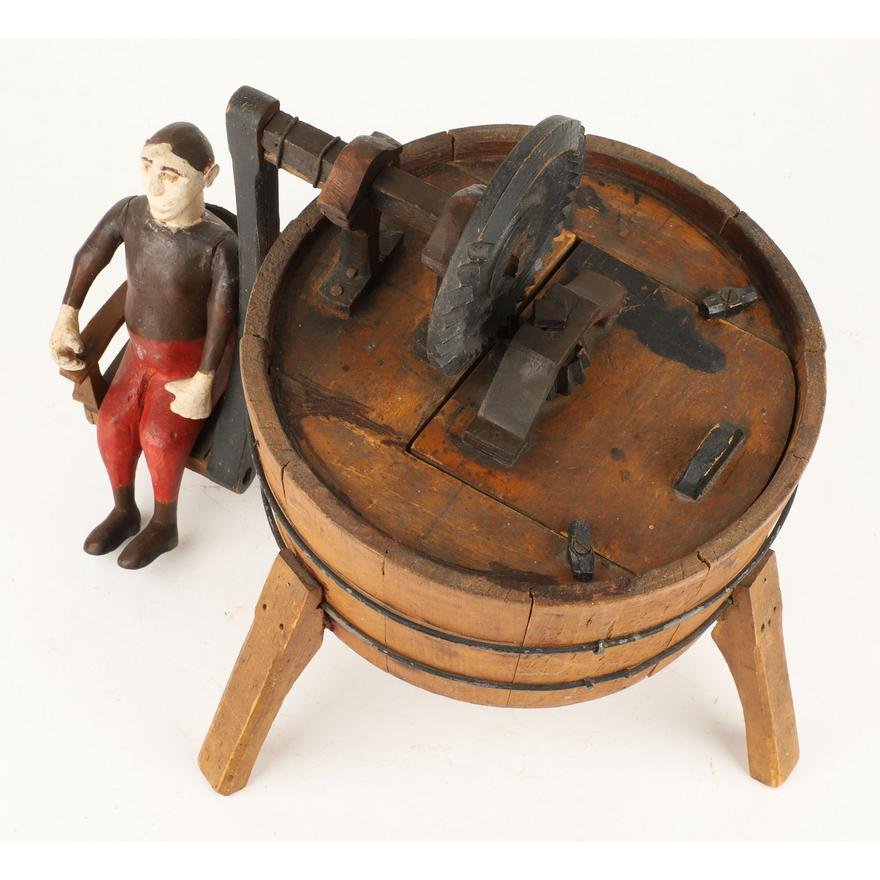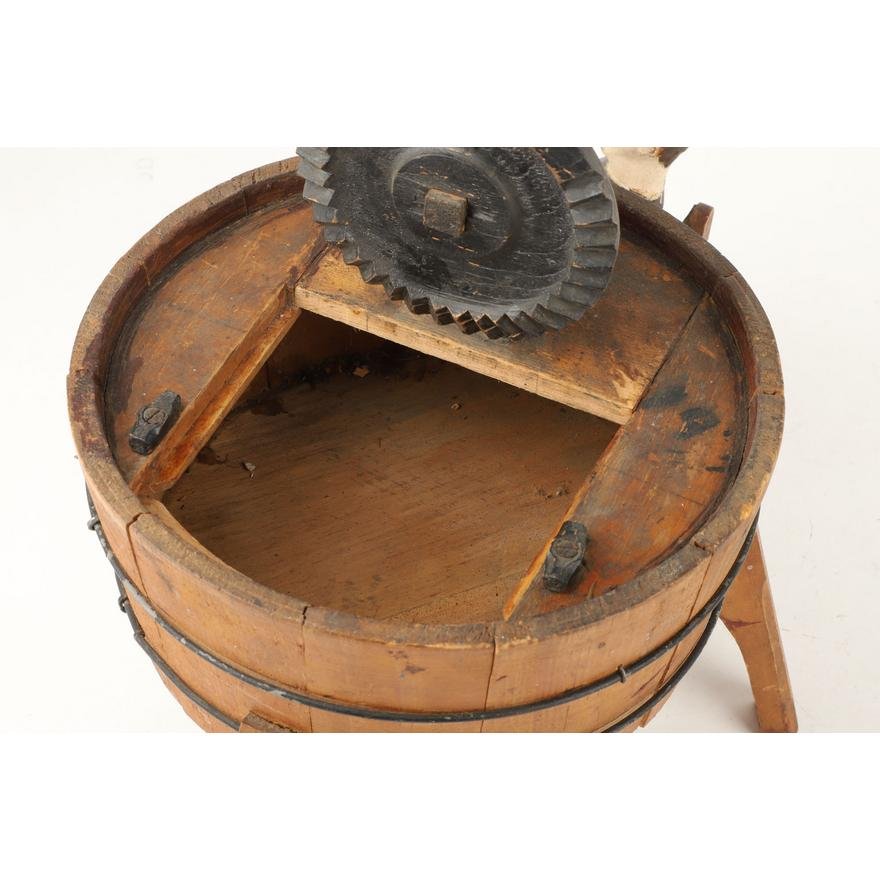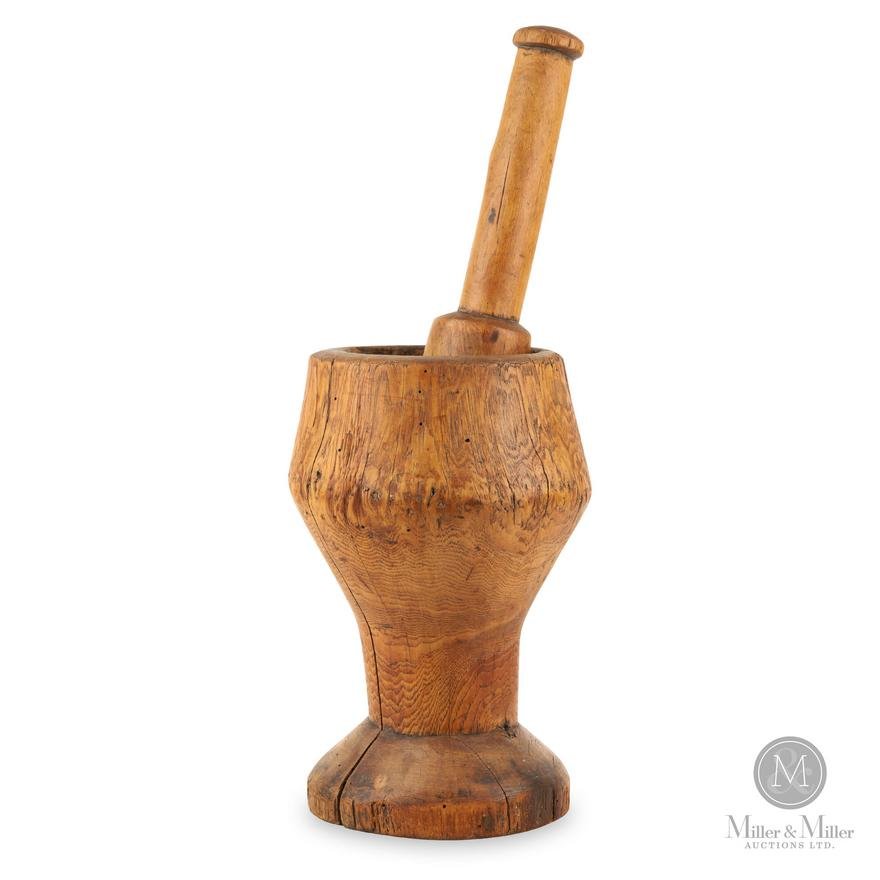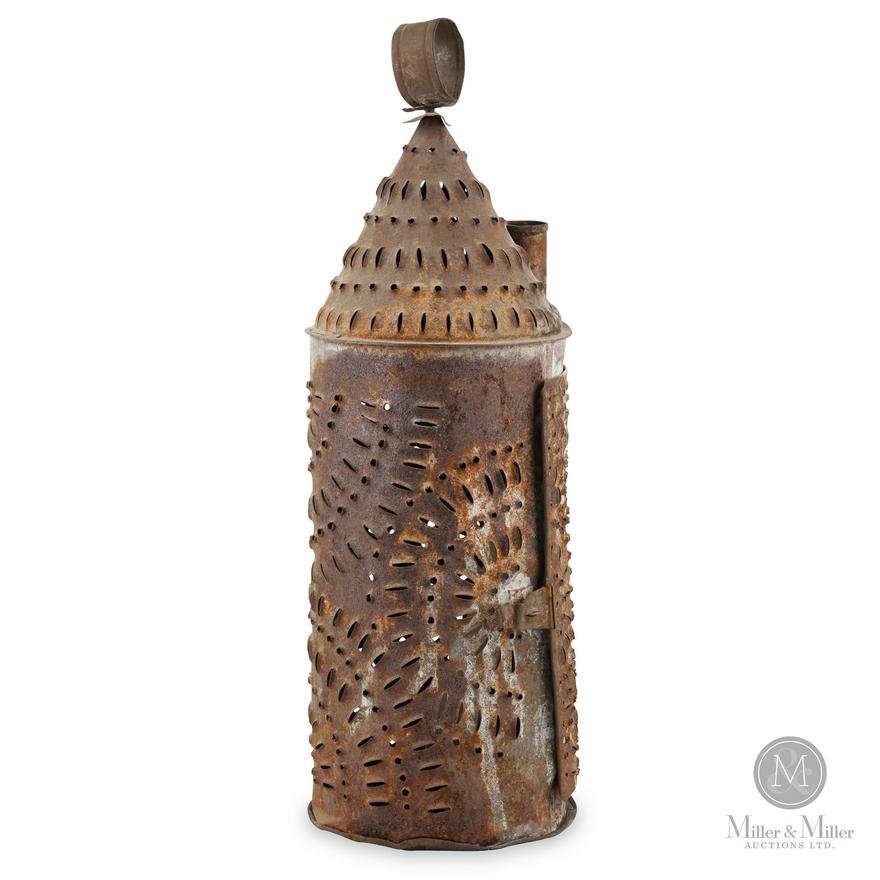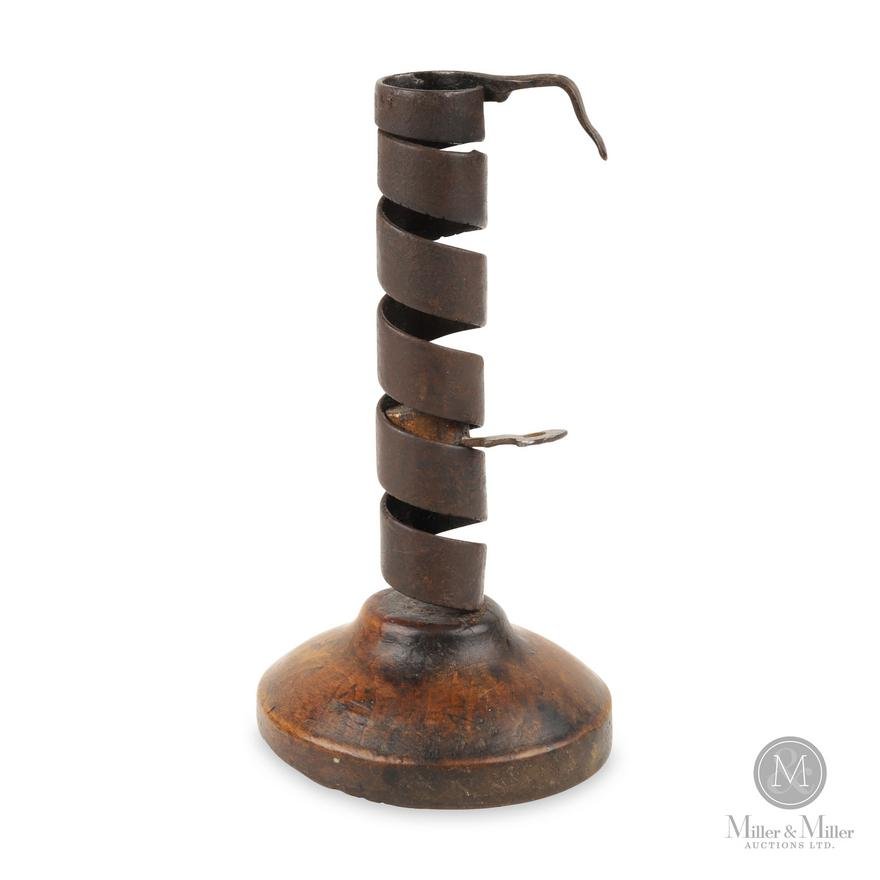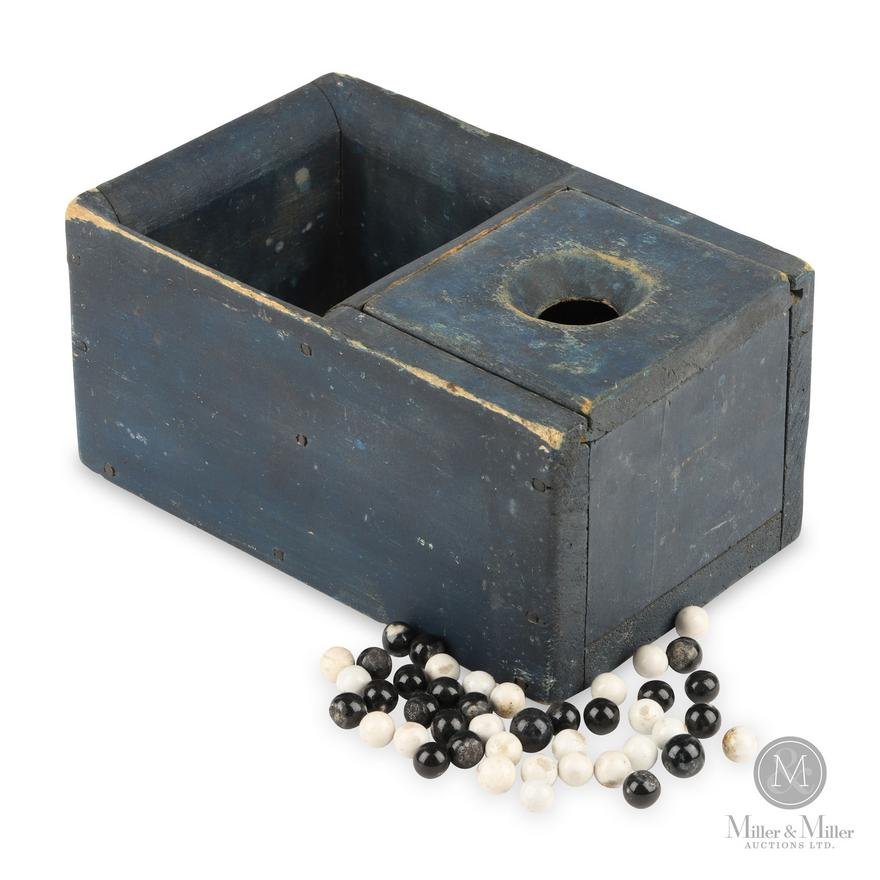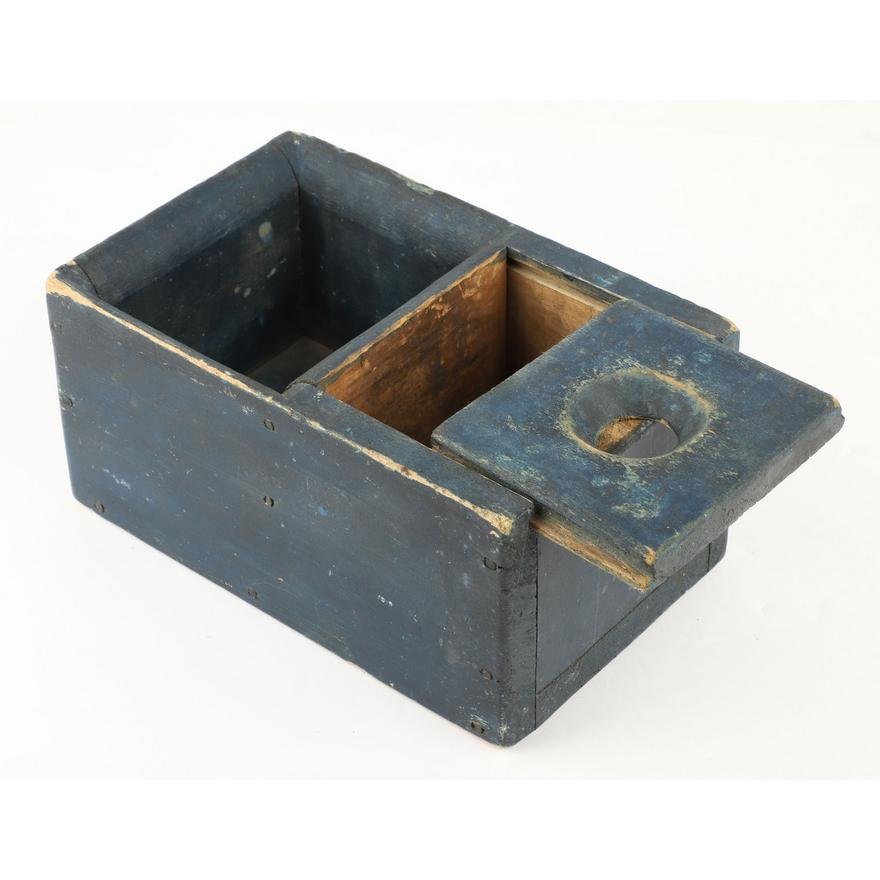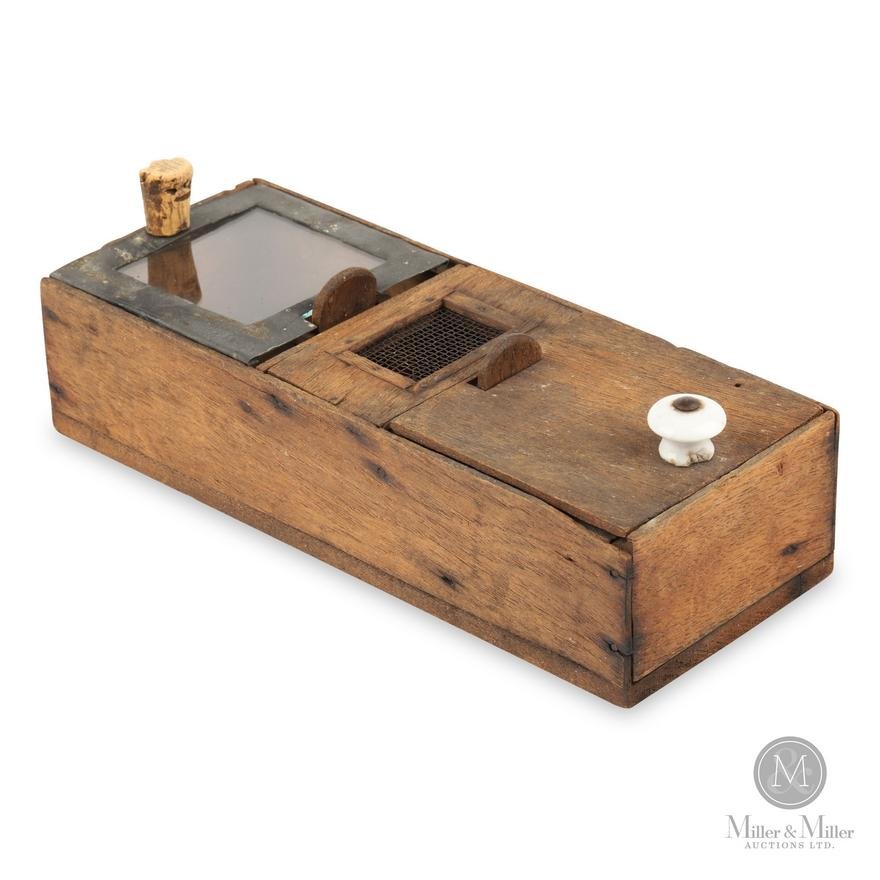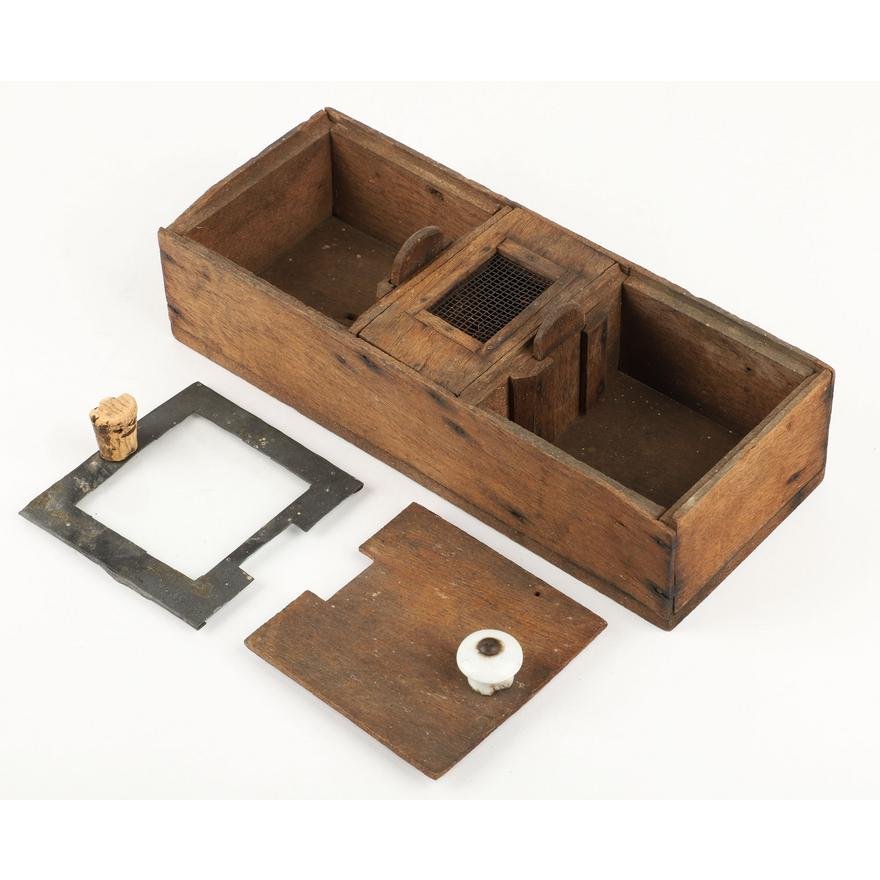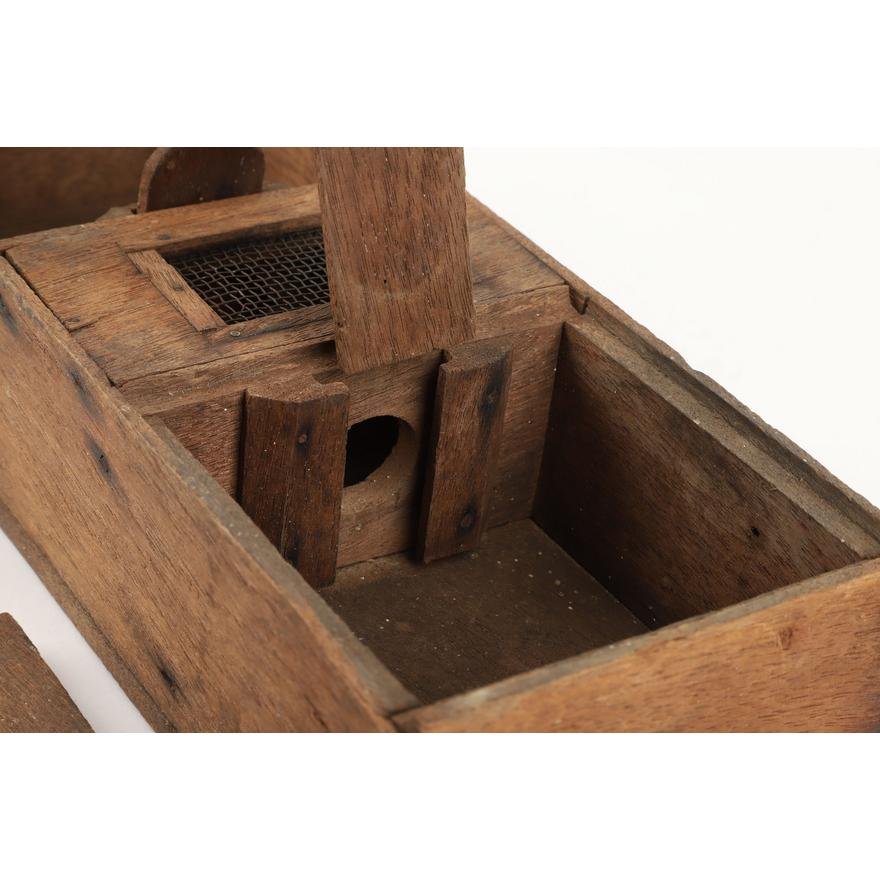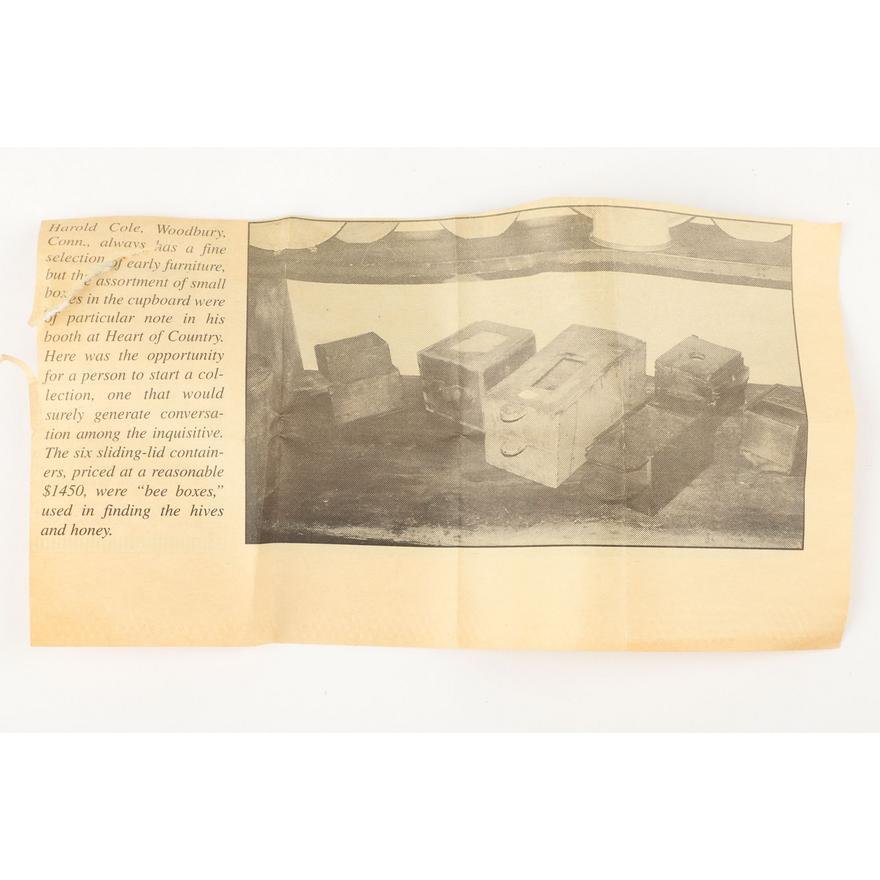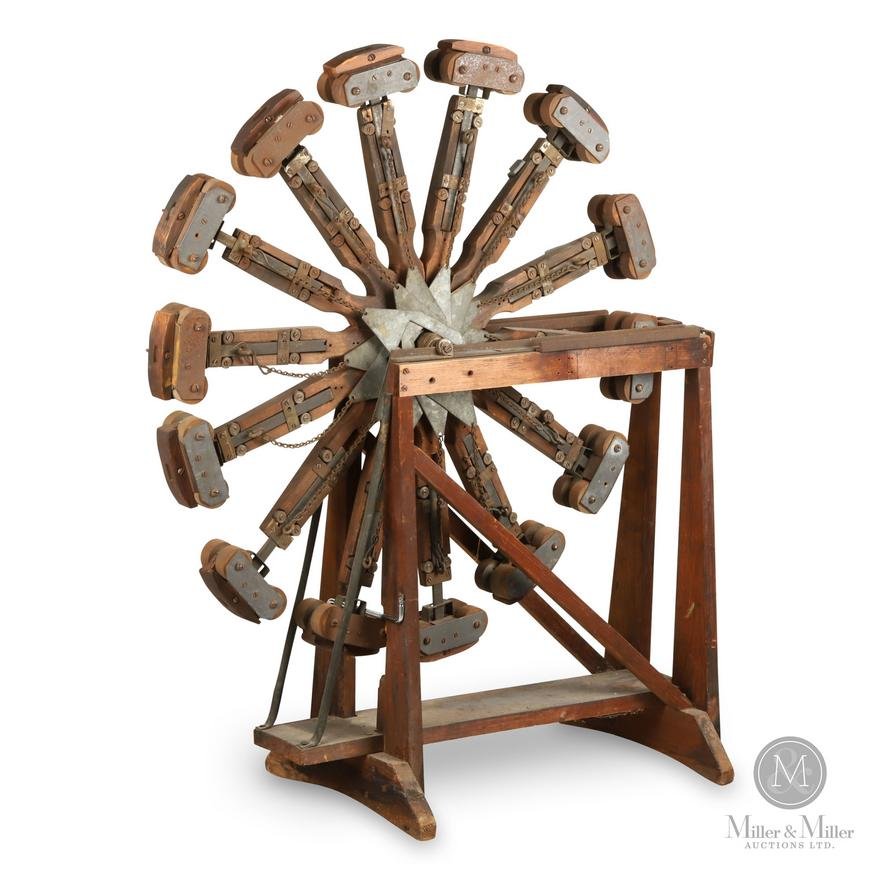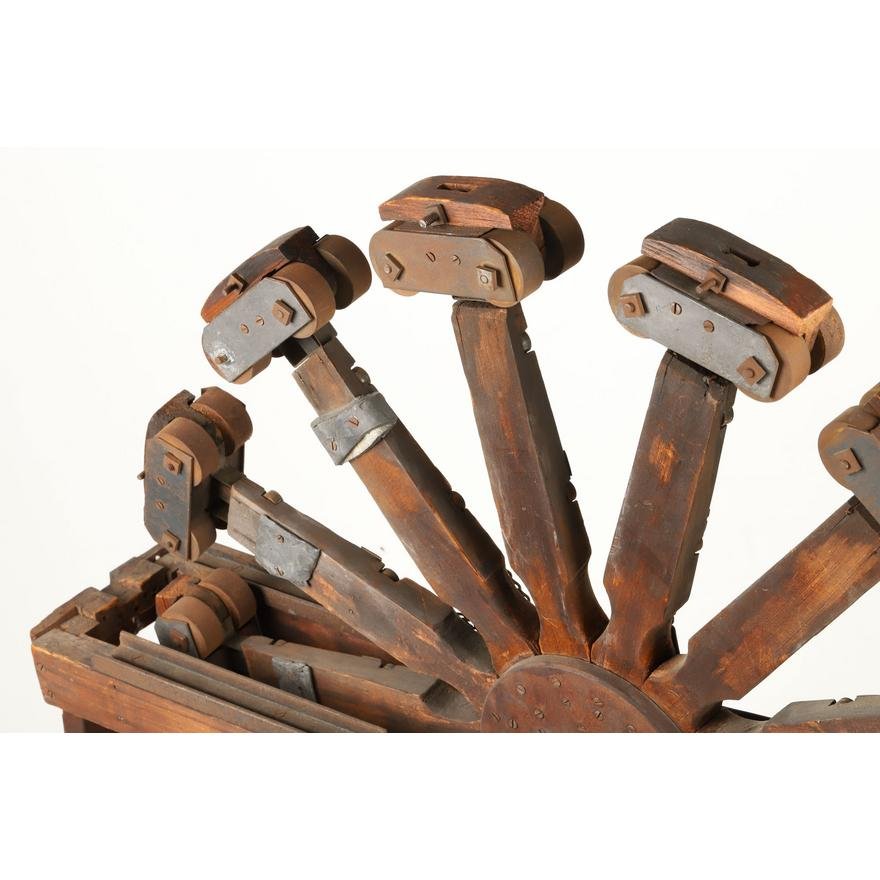Our handmade heritage
Patent models, folk art and primitives offered from the legendary Catherine Thuro
Catalogue Manager Andrea Nechita poses with the Farm Gate Working Patent Model offered as lot 10 in Miller & Miller’s March 25th sale.
“Craftsmanship. It’s not about making something that exceeds expectations. It’s about creating something that changes them.”
– Todd Carmichael, American entrepreneur and philanthropist.
Internationally renowned researcher, writer and collector Catherine Thuro had a knack for explaining things. While she is best known as author of the three-volume series ‘Oil Lamps’, her interests were far broader than many realize. The fascinating objects that inspired her book, Primitives & Folk Art: Our Handmade Heritage, along with pieces from her private collection are featured in Miller & Miller’s March 25th sale of Canadiana & Decorative Arts. These include patent models, primitives and folk art. Each comes with a story.
Catherine Thuro’s Patent Models
In a world bolstered by technology, it has become simpler than ever to demonstrate a new product idea or concept. From cutting-edge computer software to 3D printers, we take for granted the digital tools that help us propel new inventions from ideation to creation with unprecedented speed. We can now visualize, evaluate and reiterate design ideas virtually, allowing us to jump into real-world production with confidence and irrefutable proof-of-concept. With our heavy reliance on digital tools and processes, it is easy to forget how we did things before.
A glimpse inside the Miller & Miller Auctions gallery, set up for the March 25th auction of Canadiana & Folk Art and March 26th auction of Historic Lamps & Lighting.
Before technology, inventors relied solely on their own ingenuity to demonstrate a better way. The late 19th century was the golden age of invention. Everyone was thinking of ways to make a better mousetrap. Grassroots invention became so ubiquitous that in 1869 the Canadian government introduced the Patent Act to promote innovation and economic growth. The Patent Act provided a ‘time-limited, legally protected, exclusive right to make, use and sell an innovation’. The patent application process required inventors to submit patent models: miniature working models of their hopeful inventions. Accordingly, inventors with little-to-no technical training could take a shot at becoming the next Edison.
Thuro’s patent models featured in the March 25th sale are charming reminders of the ingenuity, precision and creativity of inventors from the past. From a human-powered washing machine to an adjustable steel ice skate, the models are tangible markers of human progress. Specifically, the Canadian patent models that Thuro collected are rare, and seldom surface.
Pictured above is Catherine Thuro, renowned researcher, writer and collector in the fields of early lighting, primitives and folk art.
Thuro managed to find three railroad-related patents, all of which are featured in the March 25th sale. Lot 4 features Doray & Doray’s railroad track nut lock. It was designed to provide a cost efficient and simple way to connect sections of railroad tracks. Lot 6, invented by S.S. Black in 1883, also hoped to improve the railway system with an innovative train car seat design. It demonstrates the ability to reverse the position of the seat’s backrest, allowing the passenger to face the direction in which the train was travelling.
Doray & Doray's Railroad Track Nut Lock Patent Model is offered as lot 4.
S. S. Black's Railway Car Seat Patent Model is offered as lot 6 in the upcoming sale.
Most impressive is lot 136, featuring Toronto’s Hiram L. Piper’s patent model of an early 1900s railway semaphore signal. Measuring three feet high, this working model was designed as a stationmaster’s trackside signal to tell conductors when to “go”. The stationmaster would climb a ladder, ignite a lamp inside of the tower, adjust the wick, and pull a chain to elevate the light in front of the coloured glass.
The H.L Piper Railway Semaphore Signal Patent Model is offered as lot 136 in the auction.
In the late 19th century, agricultural innovations provided farmers with an opportunity to achieve a competitive advantage. Inventions such as farm tools and machinery were commonly submitted for patent consideration. Lots 9 and 10 are patent models of farm gates. The former is retractable, while the latter tilts upward. Lot 12 is a well-crafted model of a horse-drawn single furrow plow.
Pictured above: Farm Gate Working Patent Model (Lot 9), Farm Gate Working Patent Model (Lot 10), and O.G. Greenleaf's Horse-Drawn Single Furrow Plow Patent Model (Lot 12)
Machinery models designed to improve production efficiency were also lucrative prospects for inventors. The portable lozenge tray receiver and elevator offered as lot 11 was designed by Toronto-based Thomas Robertson in 1877. The contraption was designed to improve efficiency for lozenge (hard candy) making by collecting multiple trays of finished lozenges from the main machine, and hoisting or lowering them for drying.
T. Robertson's Portable Tray Receiver & Elevator Patent Model is offered as lot 11 in the sale.
Other interesting examples offered as part of the sale include a leather boot by inventor Robert Church (lot 3), a working water closet model by inventor J. Robertson (lot 5), and a pipe organ part by inventor S.R. Warren (lot 7).
Pictured above: Robert Church's Leather Boot Patent Model (Lot 3), Robertson's Water Closet Working Patent Model (Lot 5), and S.R. Warren's Organ Workings Patent Model (Lot 7).
An especially interesting model of a human-powered washing machine is offered as lot 255 in the sale. It is a folk art model, meaning it was not intended for patent application but was likely created as a means of demonstrating or testing feasibility of one’s idea on a smaller scale. It is constructed as an oversized, staved wooden tub with an agitator mechanism operated by a man swinging back and forth in a suspended chair. Thankfully, there was no option for a spin cycle!
This Folk Art Washing Machine Working Model is offered as lot 255 in the sale.
Catherine Thuro’s Primitives and Folk Art
Folk art creations, such as the human-powered washing machine mentioned above, provide us with a uniquely personal glimpse into the minds of everyday people from the past. In 1979, Catherine Thuro published Primitives & Folk Art: Our Handmade Heritage. Here she documented her collection of extraordinary primitives and folk art objects - many of which are included in the March 25th sale.
The offering contains an array of early everyday tools including an unusual apple parer (Primitives & Folk Art, p.51), a hardwood mortar and pestle (Primitives & Folk Art, p.62), a pierced tin candle lantern (Primitives & Folk Art, p.86-7), and an adjustable spiral form candlestick (Primitives & Folk Art, p.84).
Pictured above: Early American Shaker Apple Parer (Lot 245), Hardwood Mortar and Pestle (Lot 248), Pierced Tin Candle Lantern (Lot 247), and Adjustable Spiral Form Candlestick (Lot 246).
Ever wonder where the term “black balled” (to be voted down) originates from? Thuro tells the story in her book (p.35) using lot 156: an 1850s ballot box. The box consists of two compartments, one open and the other with a slide lid and a hole for inserting the black or white marbles used for voting. White marbles indicated a “yes” vote and black marbles indicated a “no” vote, hence the expression “black balled” or voted out. It is also interesting to note that the word “ballot” is derived from the Italian word, “ballota” meaning “a little ball”.
This early ballot box is offered as lot 156 in the sale.
Many of the tools featured in Thuro’s Primitives and Folk Art were used by early settlers. An early fence wire tightener (Primitives & Folk Art, p.113), was repurposed from the high quality steel of worn out files and rasps, since they could not be sharpened. Another early invention is the forged iron calf weaner (Primitives & Folk Art, p.44). Rather than giving the calf a swift kick every time it attempted to feed, the weaner (tied onto the calf’s head) was designed with forged spikes to achieve this method of weaning. Other notable examples include a forged iron carriage jack (Primitives & Folk Art, p.144), and a needle engraved powder horn (Primitives & Folk Art, p.19).
Lot 254 is a bee hunting box. As Thuro explains in Primitives and Folk Art (p.28), it was used for capturing and releasing bees in order to study their flight direction, known as “the bee line”. The goal was to locate the tree containing the hive, to remove the honey.
This Beekeeper’s Bee Box is offered as lot 254 in the sale.
Although no perpetual motion machine has ever been successfully created, the creator of lot 256 was not afraid to try. This well-made machine consists of a wooden frame supporting a central rotating hub with fourteen arms radiating from the center, each capped with a weight. The weights slide in and out of the arms to create motion by slotting in at the top and sliding out at the bottom to create, in theory, perpetual motion.
This “Perpetual Motion” Machine is offered as lot 256.
Researcher and author Catherine Thuro is one of Canada’s best-known collectors. On March 25th, many of the objects that inspired her writing will hit the auction block at Miller & Miller. The fascinating objects that inspired her book, Primitives & Folk Art: Our Handmade Heritage, along with the patent models, primitives and folk art from her private collection, will find new curators. Thuro’s collection represents our handmade heritage. It gives us perspective into why we are the way we are today.
Story by Tess Malloy
Tess is a freelance writer and history enthusiast who enjoys unearthing interesting stories about remarkable people and objects. Tess has written for The Miller Times for five years.
Auction Details:
Canadiana & Decorative Arts
Saturday, March 25, 2023. 9am EST
Did you enjoy this story? Feel free to share it using the links below:






